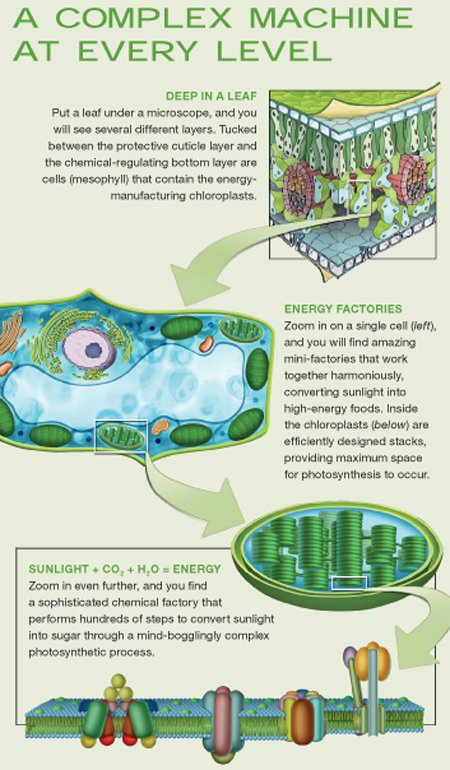The Origin of Photosynthesis
Hall of Life—Plant Exhibits
on July 25, 2016Plants are able to transform sunlight, carbon dioxide, and water into energy in a marvelous process called photosynthesis.
There are many problems with the naturalistic origin of photosynthesis. For example, 17 enzymes are required to assemble chlorophyll. Without each of these 17 enzymes, photosynthesis cannot happen. Where did the information come from in the first place that tells these enzymes how to combine to form chlorophyll? Evolutionists have never explained, much less proven, what they imagine to have happened.
Additionally, the intermediate products resulting from photosynthesis are toxic to the cell. Without the proper enzymes being present at the same time to detoxify the process, photosynthesis would kill the cell that was photosynthesizing. The low probability of all the enzymes evolving simultaneously makes it virtually impossible that photosynthesis occurred by chance in “primitive” bacteria, as protozoa-to-plants evolution claims.

From a biblical perspective, we understand that God created the various plant kinds with the ability to photosynthesize from the beginning.
For more information, see www.answersingenesis.org/evidence-against-evolution/shining-light-on-the-evolution-of-photosynthesis/.
Related Media
Plants
Related Downloads
Creepy Crawly Plants
Audio DownloadSame Plants & Animals—Two Different Views
PDF DownloadMuseum Guide
Are you exasperated by all the hype about "millions of years" in secular museums? The Museum Guide will help!
Browse Kids BookRecommended Resources
- © 2025 Answers in Genesis
- Privacy Policy
- Contact
- About


